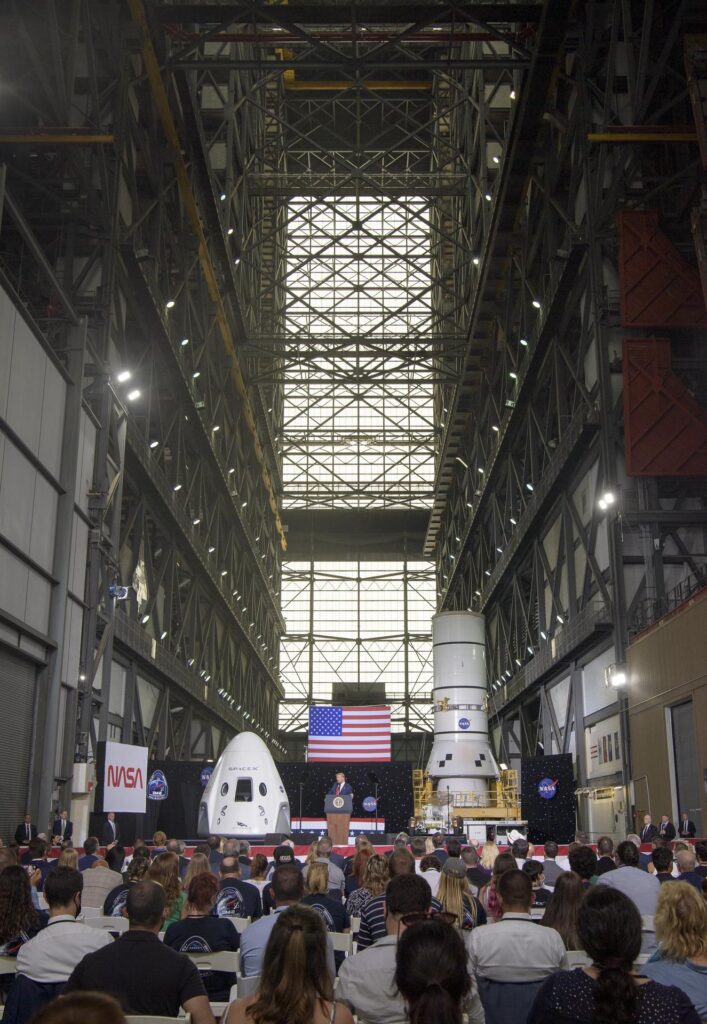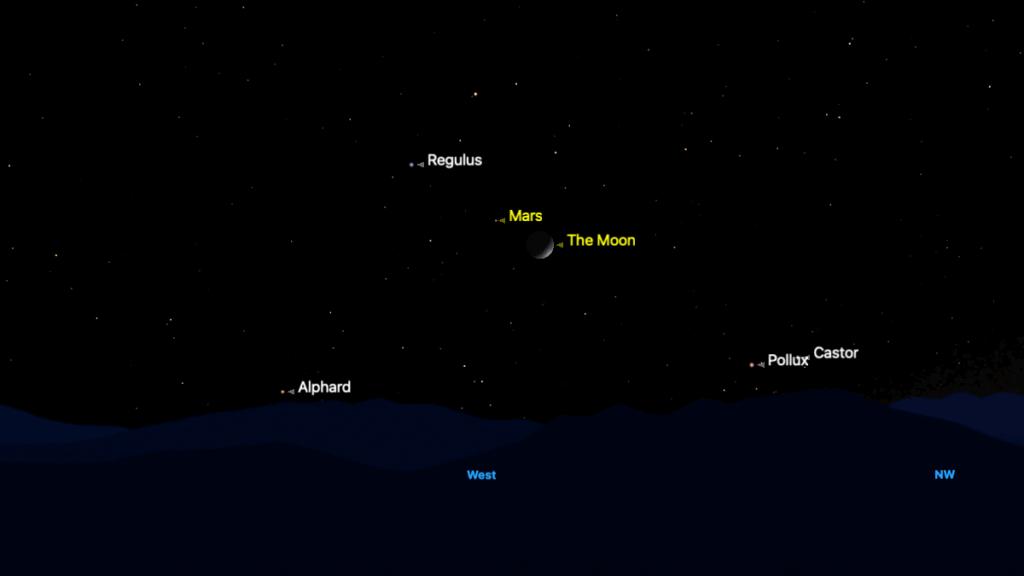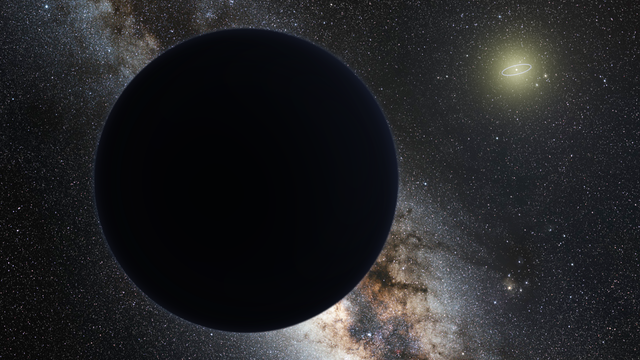NASA made a splash today (April 6) by dropping a test version of its Orion crew capsule for future moon missions into a pool.
The 14,000-lb. (6,400 kilograms) test capsule, a nearly identical replica of the real Orion, plunged into the Hydro Impact Basin at NASA’s Langley Research Center in Hampton, Virginia, at 2:02 p.m. EDT (1802 GMT) today. It was released from a height of about 7 feet (2 meters) and only fell for about a second before it splashed into the water.
“That was amazing,” Ally Olney, a digital media specialist at NASA Langley who hosted a live webcast of the test, said as the capsule bobbed in the water after a successful splashdown.
“Can’t get better than that. It looks like a perfect release, and looks like the capsule behaved as expected,” Jacob Putnam, a data analyst at Langley, added.
Video: Orion capsule dropped into a hydro impact basin by NASA




Today’s drop test is part of a series of tests NASA began March 23 “to finalize computer models for loads and structures prior to the Artemis II flight test, NASA’s first mission with crew aboard Orion,” NASA officials said in a statement.
The Orion spacecraft is designed to launch astronauts to the moon for NASA’s Artemis program, and it could potentially be used to carry astronauts to other destinations beyond Earth’s orbit. Orion returns those crews safely to Earth with a parachute-assisted splashdown in the ocean. For the drop test, engineers at NASA Langley loaded more than 500 sensors into the mock spacecraft “to measure the forces that are acting on the test article during the impact event,” Putnam said.
“Those forces are going to tell us a lot about any risk to the structure of the test article or any components inside of it, and the motion of the capsule through the water is going to tell us a lot about what the occupants inside might be experiencing,” Putnam said. “So, really with this test we’re ensuring that both the test vehicle — or future Orion vehicle — as well as the astronauts inside are safe during any future landings.”

NASA still has at least two more water-impact tests planned for this Orion test capsule. After one last “drop test” from a higher altitude, it will undergo a “swing test,” during which it will swing into the water at an angle, rope swing-style.
Once these drop tests are complete, “this is sort of the end of the road for this test article,” NASA’s Orion Crew and Service Module manager Debbie Korth said during a live webcast of today’s test. “This will be the last big test to qualify the structure, but it’s been used all along the way for a variety of tests to verify the vehicle design,” she added.
The first planned mission with NASA’s Orion capsule will be an uncrewed test flight called Artemis 1, currently scheduled to launch in late 2021 on a Space Launch System (SLS) megarocket — the rocket NASA plans to use for all Orion missions. The real Orion capsule that will fly on Artemis 1 arrived in Florida in March 2020 to begin preparations for its inaugural launch.
Artemis 2, the first crewed Orion mission that will carry astronauts on a loop around the moon, is currently scheduled to launch in 2023, followed by the Artemis 3 crewed lunar landing mission in 2024.
Whether NASA will stick to that schedule under the new presidential administration — President Trump in 2017 directed NASA to land on the moon by 2024 — remains to be seen. Both Orion and SLS have faced numerous delays in their development, the latest being a result of shutdowns amid the COVID-19 pandemic. In addition to several delays, the pandemic is expected to cost NASA $3 billion overall.
Follow us on Twitter @Spacedotcom and on Facebook.


